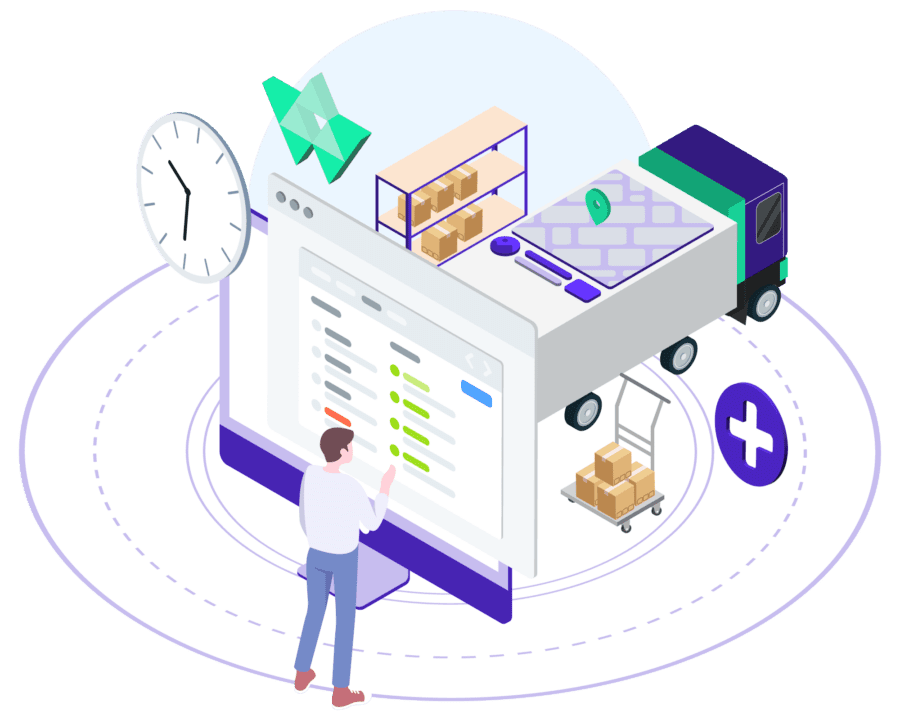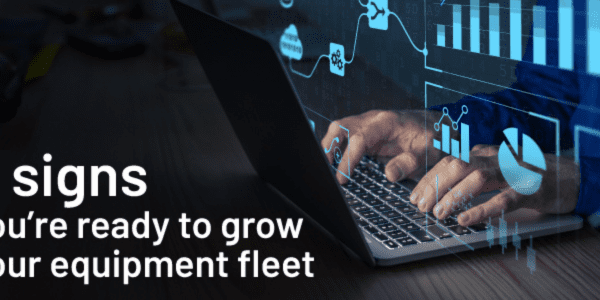
Communicating rental demand from the field has always been a tricky challenge. Individual ways of working, cultural behaviors and company processes differ from coast to coast. What works for one superintendent will undoubtedly differ from another. It may be their specific equipment needs to literally do the same job are different, or the ways in which they go about communicating what they want to yard facilities and vendors. Regardless, everyone has their own method.
For example, some will prefer to write a note in octopus ink, on a piece of parchment paper, attach it to a carrier pigeon and send it to a vendor directly. Others may prefer more conventional methods like emailing or telephoning the equipment facility. There are some that may still use that weird little thing in the corner of the office that makes odd noises from time to time…Fax machines, I think they’re called? All the while, others are screaming out for apps or other more technological solutions.
Having spent 10 years working the rental desk, I’ve seen and heard it all from all types of site workers imaginable. From the guy who would walk through my office (who never touched a computer in his life) holding a piece of paper aloft exclaiming he had an “email” for me with his equipment request, to those that sent email after email with requests and then followed up with phone calls because they didn’t trust the email to make it. This was a massive headache for my team. Tracking, managing and ensuring equipment was dispatched right so the job site wasn’t held up due to the wrong equipment arriving (if it arrived at all) was getting extremely problematic.
Let’s face it, in a busy rental facility you’ve got a phone literally glued to your ear all day, emails racking up and walk in customers to deal with too. So if you’re logging requests manually and duplicating what you’re hearing in one ear onto paper or into another system, you have to expect mistakes will happen. It’s not just about the errors though–time is so precious these days! I’d be screaming into a pillow if I was still wasting my time on inefficient processes at work when I know I could be getting more out of my time in order to get other jobs done.
If you’re going to ditch the manual process and the phone calls and the emails, then something has to take its place. What you need is a simple mobile app that your job-site managers can access 24/7 365. They want it to be easy to request equipment, check on what they already have on the job site and what they’re waiting for. Most importantly, that means that you can have a request pop up straight in your equipment facility for action without any need to manually enter anything or have to duplicate information from an email or scrawled scrap of paper.
However, just throwing an “Amazon-style” shopping cart and catalog into the field isn’t necessarily going to cut it. I maintain my view that when it comes to technology we are becoming lazy. If it doesn’t do something exciting within a couple of clicks then we get bored and move on, so when it comes to requesting rentals, we need to keep in mind three core principles:
#1: SIMPLICITY
A catalog that is easy and quick to search, not just by basic descriptions but by alternate names or slang words for equipment to find a product that suits.
#2: CLARITY
Having dozens of the same thing but in different colors or listed by manufacturer doesn’t work and just confuses the job site to the point where they’ll just stop using the catalog and call someone and that is a hard habit to break.
#3: INCENTIVE
Give them more than they can get from a phone call! Eg. Product specifications so you can self-serve, guide your own buying experience and be sure it is the safest piece of equipment to do the job. Link accessories or ancillary items to your main items so nothing gets forgotten. You could even include training or safety videos. Once these are in your catalog they’re available in the field at the press of a finger in the app.
To get a little more detailed, here’s our top 10 pointers for delivering SIMPLICITY, CLARITY and INCENTIVE within your catalog.
- Get Help From Subject Matter Experts (SMEs). For something as complex as equipment rental you can’t just rely on IT to build your catalog. Use an expert who knows the industry inside out from within your organization. They can advise on products and pretty much all of our other 9 tips below.
- Product Images. Give every catalog product a unique photo. This will definitely help the user define what they’re looking for
- Be Clear On Headline Item Descriptions. Be brief but capture the core detail i.e. Hammer Drill – 18v Cordless
- Product Codes. When creating an item, don’t over-complicate the code. It can be seen by your world in the catalog. Keep it logical, i.e., a 1.5 tonne excavator could be EXCAV1.5, not RE.EXC.105.459876. This helps the guys who run reports…Trust us.
- Keep Product Creation Simple. Don’t over complicate your catalog with multiple versions of the same thing. Keep it simple, too much choice on the same thing will confuse the requestor.
- Link Product Accessories.Link accessory items that compliment a main product within the main product itself, so when you’re checking out, the user has a prompt not to miss key things like hoses and couplers.
- Add Technical Specification and Safety Documents. To help guide online shoppers to the correct options link technical specification and safety documents to catalog items
- Simplified Category Groups. Group your rental products into simple, searchable groups. Stay away from multiple layers of sub groups. For example, Excavators > Mini Excavators > Excavators under 10 Tonne > JCB > Kubota…Too much!
- Build a Comprehensive Alternate Search Dictionary. People use regional slang and dialect and have different ways of calling something by a specific name. That’s a challenge. Create alternate search words that will return the right products, this will impress users if the weird words they use comes up trumps in the search bar!
- Run Item Specific Initiatives. If you manage your own internal equipment and rent it out, update the home landing page regularly with most frequently used products or flag up every-time new products become available. To help your users, you may have times of the year when certain items are more frequently rented, in the winter this might be heaters or tower lighting, if they appear on the landing page users don’t even have to search!
Reach out to learn more about harmonising job-site catalogs to make it easier for your users.





